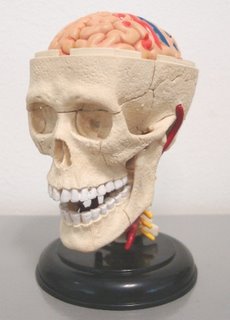 How to address the main question: Was it a mistake?
How to address the main question: Was it a mistake?Fresh Brainz will use an analytical approach - which is to break this big question into several smaller questions and examine publicly available data to answer each of them.
1. Is the governmental effort spread too thin?
To find out if there are too many research areas or duplication of areas, I have consulted the research group descriptions of A*Star biomedical research institutes IMCB, GIS, and CMM.
The number of investigators in key research areas are summarized below. Please note that the figures are overestimates because some scientists are involved in more than one area.
Cancer Biology = 26
Regenerative Biology (eg. stem cell and developmental bio) = 21
Infectious Disease = 19
Technology Development = 16
Other basic biology areas (eg. structural bio) = 16
From this information you can see that the research strategy is centred on cancer, with regenerative biology, infectious diseases and technology development as other important areas.
Incidentally, hepatitis B is studied by researchers both in IMCB and GIS. The group in GIS is interested in hep B vaccine response whereas IMCB is more interested in hep B life cycle events.
There is no obvious duplication of research interests based on the research group descriptions. In addition there are unique areas in each institute. GIS has human genetics and system biology groups, IMCB has cell cycle control and translational research, CMM epithelial biology and genetic medicine.
In the newspapers, Prof. Lee wrote that she advocated "niche areas versus the shotgun approach we have adopted in Singapore."
Based on the distribution of researchers shown above, the current biomedical strategy does have a niche in cancer and regenerative research, though it is true that the research projects within each category is quite varied.
In addition, Prof. Lee observed that research is unpredictable, commenting that "even a combination of talented researchers, unlimited funding and cutting-edge equipment does not guarantee success."
As investors would know, when a situation is unpredictable, it is more prudent to diversify your portfolio rather than to put all your eggs into one basket.
So the recommendation should be exactly opposite - if the government has no confidence in the outcome of any one research area, they should have an even wider spread of research categories. To focus specifically on hep B and head injury as Prof. Lee suggests would mean high confidence that research in those areas will predictably pay dividends.
2. Are we identifying the correct niches?
Prof. Lee highlighted the importance of research in hep B, liver and stomach cancer, lupus, and head injuries. As I mentioned earlier, there are already A*Star groups working on hep B (plus at least two more researchers at NUS). There are also groups studying cancer and immunology.
As for head injuries, Prof. Lee is right to emphasize its impact to public health. It is the leading cause of death and disability for people under 40 in Singapore. This is a serious problem that should not be underestimated.
However, it is not a medical condition of the highest overall impact. This is a list of the top five killers of Singaporeans in 2005. (source: Ministry of Health website)
Total deaths = 16 217
Cancer = 26.4%
Ischaemic Heart Disease = 18.1%
Pneumonia = 14.9%
Cerebrovascular Disease = 9.9%
Accidents, Poisoning & Violence = 4.9%
Cancer and ischaemic heart disease are the top two, accounting for a whopping 44.5% of total deaths in Singapore. In contrast, acute head injury is only a subset of the 4.9% of people who die from accidents, poisoning or violence.
Based on this information, it is reasonable to have proportionally more research work done on cancer and heart disease. The current research focus on cancer and regenerative science does approximately reflect this.
In addition, there are already research groups in IMCB and CMM working on neural regeneration that is of direct relevance to brain injury. In fact one of the researchers at the CMM is a medical doctor interested in brain injury repair mechanisms.
Prof. Lee wrote that "At the National Neuroscience Institute, we have a good track record of head injury research and a comprehensive programme from molecular to bedside, from the acute stage to rehabilitation."
From the research group website at NNI, you can see that only one of the eight research labs focuses on acute brain injury. While the lab publication record in the past few years is good (including one paper to Neuroscience), it is hard to understand why this area should be chosen in preference to the other good labs working on Parkinson's and Alzheimer's Disease.
Although Prof. Lee said that head injury is "not a glamorous research topic", she also mentioned that ten major centres worldwide are doing serious research in it. This means that there are already many groups working on it.
There is no question that hep B and head injury are important research areas, and they are already part of the government's research portfolio. Perhaps Prof. Lee feels that there should be a few more research groups working in this area, which is fine.
However, based on publicly available information there is no strong reason to refocus the entire national effort into these two areas, unless Prof. Lee has privileged information that suggests otherwise.
3. Are foreign scientists sufficiently productive?
The performance of foreign talents is a sensitive topic which must be addressed.
Prof. Brenner (who is an honorary Singapore citizen) thinks that "as long as foreign talent leaves a legacy - which they now all do - this is the best way of spending our money. The worst way is what happened in the past when large numbers of foreigners came and worked here, obtained their training, and then departed, leaving nothing behind."
Prof Lee goes further: "We must get a fair deal out of them, and make sure that they are here to work for the good of Singapore and not just for science alone."
So, did we get a fair deal?
In this official report you can see that in 2006, BMRC research institutes published 335 papers in international scientific journals, twice as many compared to 2001. In addition, about 35% of these were in journals of impact factor greater than five. Since 2002, 15 patents have also been awarded in a number of areas such as virology and bioimaging.
This is a good result, but are we also producing higher quality scientific papers than before? One way to look at this is to examine the citations per paper of Singaporean articles and compare it to a city of comparable size, for example Hong Kong.
This is the result for the ten year period from 1994-2004:
Hong Kong
Total papers = 18 870
Citations = 163 337
Citations per paper = 8.66
Singapore
Total = 36 506
Citations = 167 102
Citations per paper = 4.58
For a city state with only 65% of Hong Kong's population, we have nearly double their research output by volume, which is significant. However, the rate that our articles are cited is also significantly less.
Still, without yearly data specific to biomedical papers, and the latest figures for 2006, I cannot conclude if Singapore's biomedical investment is helping to enhance this area or not.
Dr. Lee asked "How many of the foreign stars have made any major discoveries after coming to Singapore?"
I think she brought up an excellent point. While a number of foreign scientists have produced excellent publications in the past few years (as high as Cell), producing major discoveries is entirely something else - that is very hard to do.
In addition to the scientist's productivity, in order to make a major discovery the creative millieu is also very important. I feel that Singapore is still lacking in this area.
Also it is difficult to assess the performance of foreign scientists in a vacuum since they often work together with local scientists. I am certain that the government must be using performance indicators to evaluate the performance of individual research groups, but this information is obviously not accessible to the public.
All I can say is that the figures suggest that combined efforts of scientists working in Singapore have produced steady results, but nothing spectacular has happened yet.
To be continued...






1 Comment:
Hi there,
your article reminds me of an old article by AcidFlask on Newsintercom:
http://www.newsintercom.org/index.php?itemid=288
Post a Comment